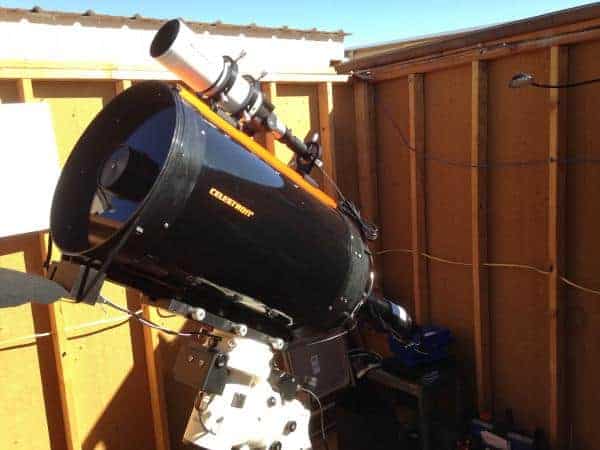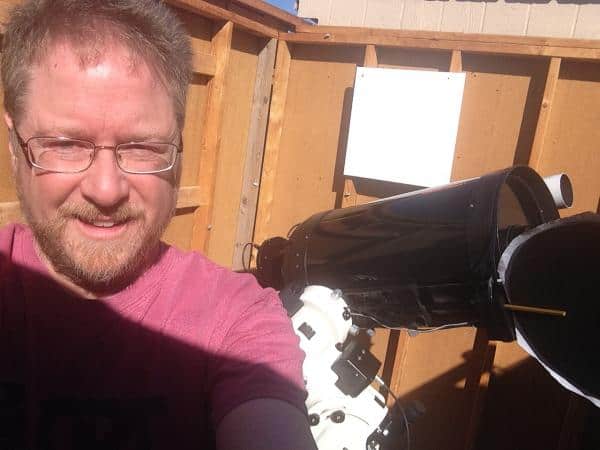<!– wp:paragraph –>
PSI Senior Scientist Jeff Morgenthaler set up a new observatory near Tucson to use changes in volcanic activity on Io to measure properties of Jupiter’s magnetosphere. A major goal of the project is to learn why ionized material from Io sticks close to Jupiter, rather than being flung out by Jupiter’s rapid rotation.
<!– /wp:paragraph –>
<!– wp:paragraph –>
The Io Input/Output observatory (IoIO) uses a very bright emission line of neutral sodium to monitor material leaving Io and entering Jupiter’s magnetosphere. A bright emission line of ionized sulfur is used to monitor material in Jupiter’s magnetosphere. The bright, extended nature of these emissions make them easily accessible to small-aperture telescopes developed for the high-end amateur astronomy market.
<!– /wp:paragraph –>
<!– wp:paragraph –>
The IoIO is funded by a grant from the National Science Foundation to the Planetary Science Institute.
<!– /wp:paragraph –>
<!– wp:paragraph –>
Above, Jeff Morgenthaler poses with the telescope in its new home.
<!– /wp:paragraph –>
<!– wp:paragraph –>
Below, the telescope is set up to be operated remotely.
<!– /wp:paragraph –>
<!– wp:image {“align”:”center”,”id”:13171,”sizeSlug”:”large”,”linkDestination”:”none”} –>

<!– /wp:image –>
<!– wp:paragraph –>
Below, the Southern Arizona site where the IoIO observatory is located.
<!– /wp:paragraph –>
<!– wp:image {“align”:”center”,”id”:13172,”sizeSlug”:”large”,”linkDestination”:”none”} –>

<!– /wp:image –>

